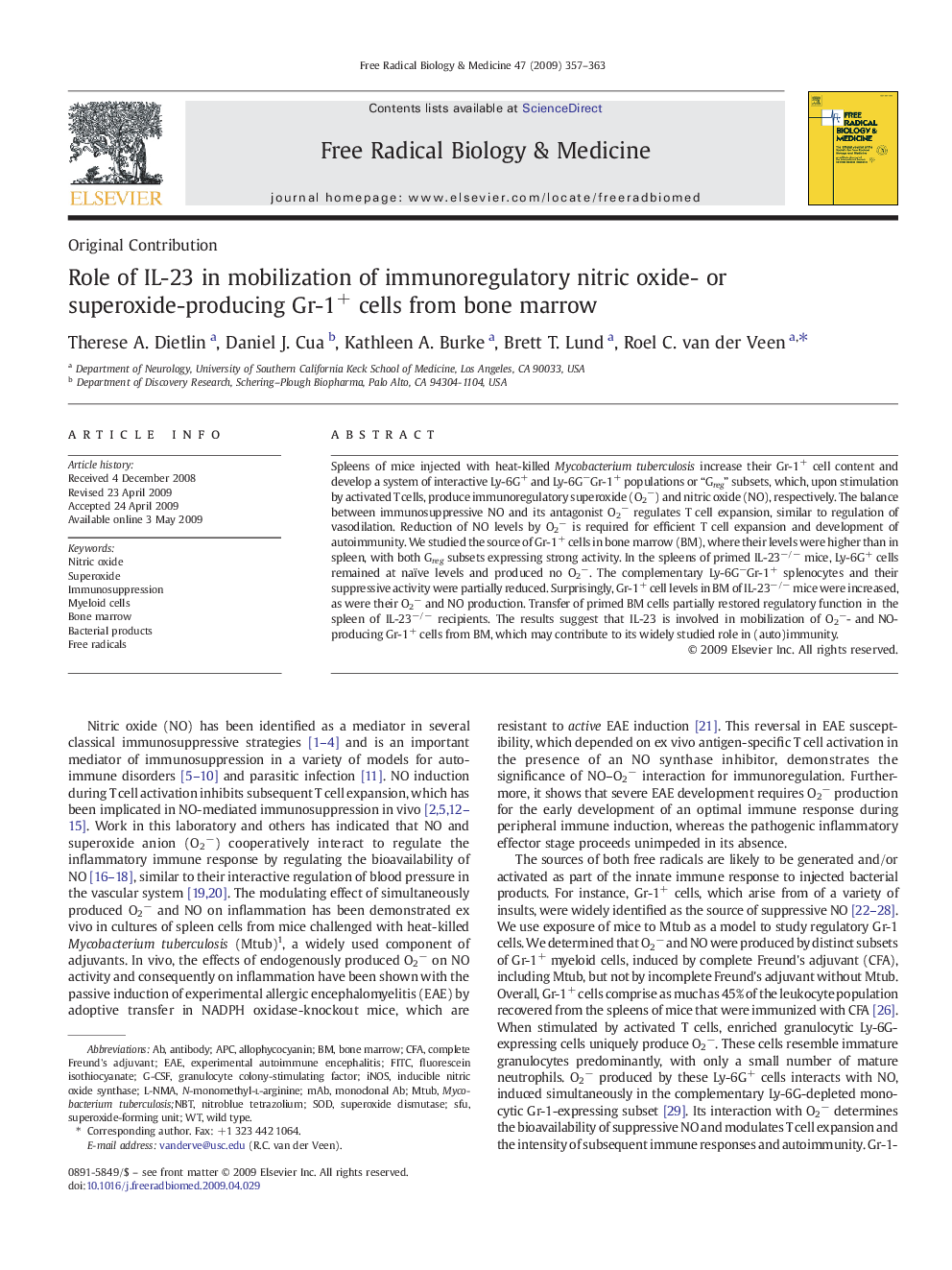| Article ID | Journal | Published Year | Pages | File Type |
|---|---|---|---|---|
| 1910629 | Free Radical Biology and Medicine | 2009 | 7 Pages |
Abstract
Spleens of mice injected with heat-killed Mycobacterium tuberculosis increase their Gr-1+ cell content and develop a system of interactive Ly-6G+ and Ly-6GâGr-1+ populations or “Greg” subsets, which, upon stimulation by activated T cells, produce immunoregulatory superoxide (O2â) and nitric oxide (NO), respectively. The balance between immunosuppressive NO and its antagonist O2â regulates T cell expansion, similar to regulation of vasodilation. Reduction of NO levels by O2â is required for efficient T cell expansion and development of autoimmunity. We studied the source of Gr-1+ cells in bone marrow (BM), where their levels were higher than in spleen, with both Greg subsets expressing strong activity. In the spleens of primed IL-23â/â mice, Ly-6G+ cells remained at naïve levels and produced no O2â. The complementary Ly-6GâGr-1+ splenocytes and their suppressive activity were partially reduced. Surprisingly, Gr-1+ cell levels in BM of IL-23â/â mice were increased, as were their O2â and NO production. Transfer of primed BM cells partially restored regulatory function in the spleen of IL-23â/â recipients. The results suggest that IL-23 is involved in mobilization of O2â- and NO-producing Gr-1+ cells from BM, which may contribute to its widely studied role in (auto)immunity.
Keywords
mAbFITCCFASFUl-NMAEAEAPCiNOScomplete Freund's adjuvantmonoclonal AbN-monométhyl-L-arginineNBT, Nitroblue tetrazoliumallophycocyaninexperimental autoimmune encephalitisFree radicalsSODImmunosuppressionMyeloid cellsinducible nitric oxide synthaseSuperoxideSuperoxide dismutasegranulocyte colony-stimulating factorG-CSFfluorescein isothiocyanateMycobacterium tuberculosisbone marrowwild typeNitric oxideAntibody
Related Topics
Life Sciences
Biochemistry, Genetics and Molecular Biology
Ageing
Authors
Therese A. Dietlin, Daniel J. Cua, Kathleen A. Burke, Brett T. Lund, Roel C. van der Veen,
